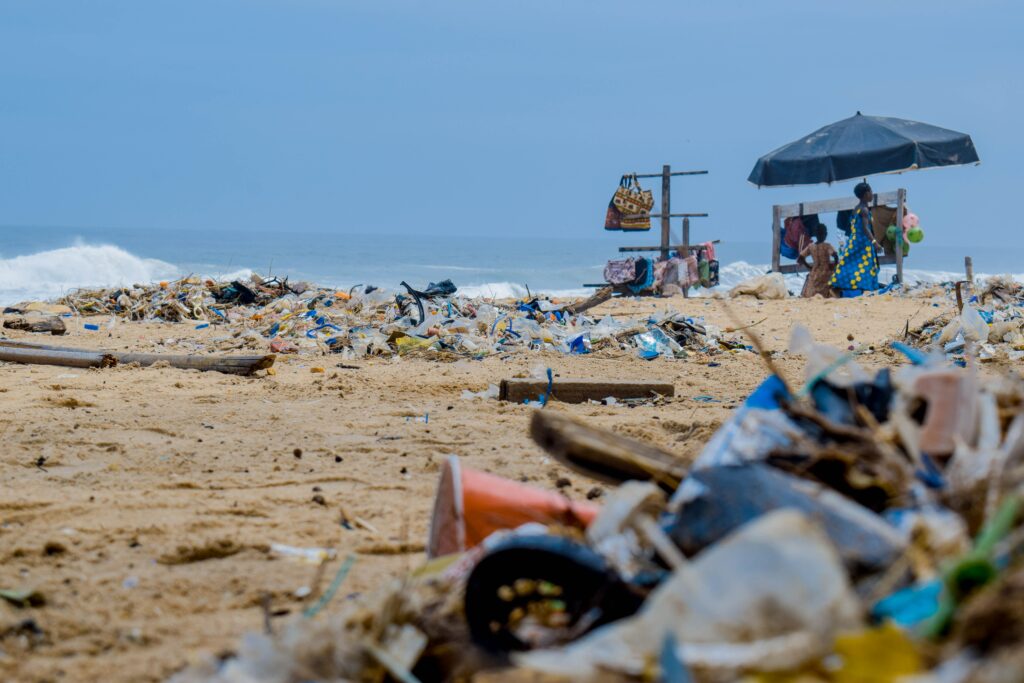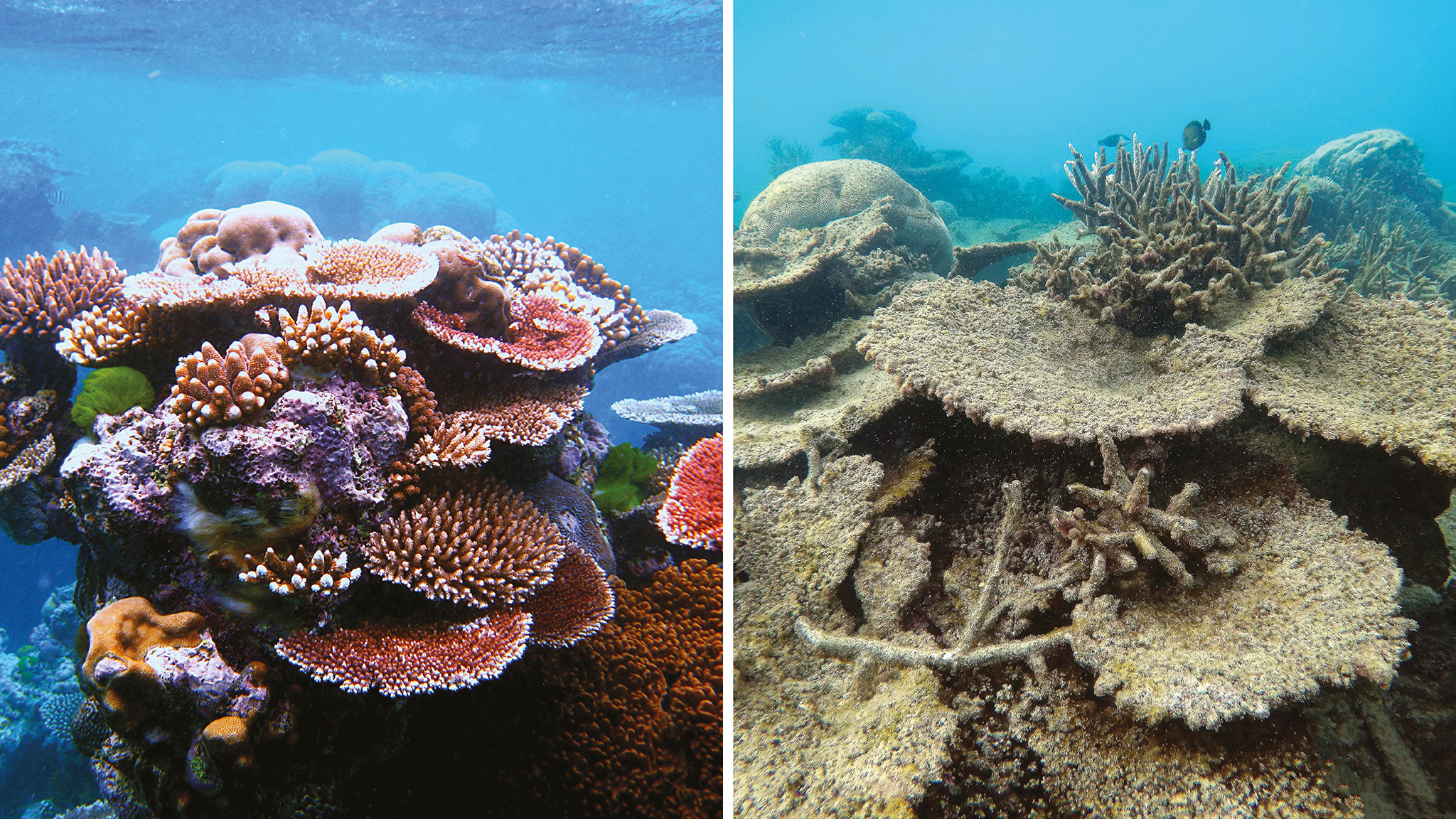Human activities are damaging the health of oceans in profound ways. Global warming, overfishing and pollution are threatening aquatic ecosystems, and a number of species face extinction.
PLASTIC POLLUTION

In simple terms, plastic pollution refers to plastic waste being found where it shouldn’t. In the context of oceans, this is anywhere. Still, according to estimates, an additional 8 million items of plastic enter the ocean each day. In total, almost 300,000 tonnes of plastic can be found in the oceans, and the weight of plastic is predicted to exceed the weight of all populations of ocean-dwelling fish by 2050.
The majority of the plastic comes from littering – from the fishing industry, waste left on beaches, rivers and in drains, among other things. Poorly managed landfill waste sites and industry discharges also contribute significantly. Despite the indisputable impact on marine life, the oil industry (one of the biggest sources of plastic pollution) is increasing its plastic production. Currently, the demand for plastics requires 12 million barrels of oil per day for manufacturing. By 2050, this figure is predicted to increase to 50 million barrels of oil per day due to rising demands.
The durability of plastic makes the environmental issue more pressing. Indeed, the US Environmental Protection Agency has stated that all plastic ever created likely still exists. The impact of this can especially be seen at the Great Pacific Garbage Patch, the largest collection of plastic waste in the world with an area of almost 700,000 square miles and growing every day.
This has a huge toll on aquatic species. In the North Pacific alone, it is estimated that fish are ingesting up to 24,000 tonnes of plastic every year. This affects the wider food web and, ultimately, humans. A 2015 study for the Scientific Reports journal found that around a quarter of all fish in Californian and Indonesian fish markets contained plastic microfibres.
Fish are not the only species at risk from plastic pollution. It is estimated that as much as 99 per cent of all seabird species will have ingested some form of plastic by the year 2050. Additionally, sea turtles and monk seals are at risk of mistaking plastic debris for food. Indeed, an increasing number of ocean animals are found dead or entangled as a result of plastic waste, with estimates suggesting that around 100,000 marine mammals are killed each year.
A further concern for plastic pollution is that clean-up operations can be very hard to execute effectively. Plastic accounts for between 60 to 90 percent of all marine debris, but only 1 per cent of all marine debris floats. This makes extracting it a costly and difficult task.
CORAL REEF DEGRADATION

The destruction of coral reefs has been increasing at alarming rates in the last decade, with a third of all corals in danger of extinction. Coral reefs are important for maintaining diverse marine environments, as they provide nourishment and shelter for many aquatic species. Conserving coral reefs is also important for human populations around the world, with many areas dependent on the livelihood provided by corals (such as fisheries and tourism).
A number of anthropogenic influences are responsible for the ongoing coral reef crisis. The main culprit is climate change. Warming ocean temperatures are responsible for nearly 50 per cent of coral destruction and reef bleaching in the Great Barrier Reef. Reef bleaching refers to the loss of vibrant colour from coral organisms as a result of changing water conditions. It is possible for corals to recover from bleaching, but a bleached coral reef is more susceptible to disease and may indicate impending death.
Dynamite fishing is also responsible for the degradation of coral reef ecosystems. The use of cyanide to stun and capture fish has a devastating impact on coral polyps as they are unable to metabolize the poison. This practice of fishing is commonly practiced in Indonesia and the Philippines, two countries considered hotbeds of coral reef populations.
Other anthropogenic factors that damage coral reefs are irresponsible tourism and sedimentation. An increase in coral reef tourism has seen a tantamount rise in reef mismanagement, where tourists often damage reefs by stepping on them or inadvertently touching them. Tourism boats vessels used for exploration trips or recreational activities are also damaging reefs through the misplacement of anchors and reckless route planning. Sedimentation refers to the transfer of harmful particles from land surfaces to the ocean. It is caused by increased urbanisation, land use change and coastal mining. The increase in ocean sediment has led to diminished sunlight and nourishment for coral reefs.
information, conservation diploma course COE
